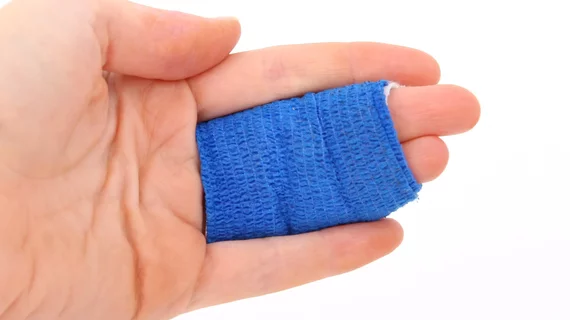AI guides care of slow-healing wounds
Industry researchers have used machine learning to predict healing times for wounds based in part on patient data stored in electronic health records.
The team suggests its model can help clinicians make optimal decisions for treating slow-to-heal abrasions, lacerations and so on by knowing which new and preexisting patient traits are most likely to influence outcomes.
The study was conducted by staff members of Net Health, a supplier of software and analytics services, and is current in Advances in Wound Care.
The team trained AI prediction models on data from more than 1.2 million wounds. The training data comprised 187 independent variables drawn from demographics, comorbidities and wound characteristics.
They tested their machine learning technique, a gradient-boosted decision tree iteration, on its ability to predict failure to heal at four, eight and 12 weeks post-initial treatment.
The model achieved area under the receiver operating characteristic curves (AUCs) of 0.854, 0.855, and 0.853, in that order, for those three time intervals.
The testing also showed the most consequential characteristics hindering healing to be number of days in treatment, wound depth and location, and wound area.
“This study demonstrates that machine learning models can accurately predict chronic wound healing time using historical clinical factors from real-world data curated from EHRs,” the authors comment in their discussion.
More:
To the best of our knowledge, there are no other predictive tools that have demonstrated this accuracy level on every treatment visit for any wound type on a population of this size. Other models developed to predict chronic wound healing time used relatively smaller data sets, had lower accuracy, were limited to specific wound types or healing times, or only made predictions at unique points in time. In contrast, the models in this study were developed on larger data sets that provide predictions for any wound type or visits for multiple timeframes. This makes the algorithms flexible in their ability to accurately generalize across a diverse population.”
The study is posted in full for free.

